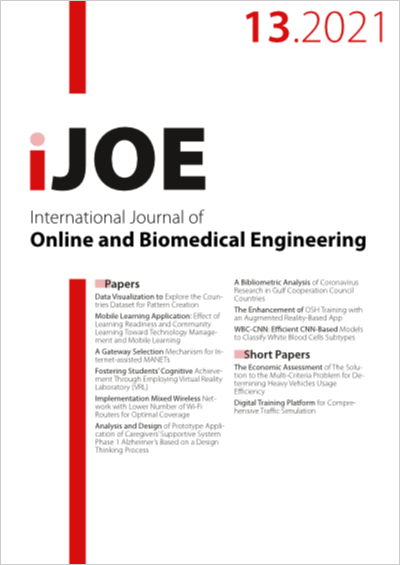WBC-CNN: Efficient CNN-Based Models to Classify White Blood Cells Subtypes
DOI:
https://doi.org/10.3991/ijoe.v17i13.27373Keywords:
Deep learning, CNN, WBC subtypes, Classification, Transfer learningAbstract
Blood is essential to life. The number of blood cells plays a significant role in observing an individual’s health status. Having a lower or higher number of blood cells than normal may be a sign of various diseases. Thus it is important to precisely classify blood cells and count them to diagnose different health conditions. In this paper, we focused on classifying white blood cells subtypes (WBC) which are the basic parts of the immune system. Classification of WBC subtypes is very useful for diagnosing diseases, infections, and disorders. Deep learning technologies have the potential to enhance the process and results of WBC classification. This study presented two fine-tuned CNN models and four hybrid CNN-based models to classify WBC. The VGG-16 and MobileNet are the CNN architectures used for both feature extraction and classification in fine-tuned models. The same CNN architectures are used for feature extraction in hybrid models; however, the Support Vector Machines (SVM) and the Quadratic Discriminant Analysis (QDA) are the classifiers used for classification. Among all models, the fine-tuned VGG-16 performs best, its classification accuracy is 99.81%. Our hybrid models are efficient in detecting WBC as well. 98.44% is the classification accuracy of the VGG-16+SVM model, and 98.19% is the accuracy of the MobileNet+SVM.
Downloads
Published
2021-12-06
How to Cite
Alofi, N., Alonezi, W., & Alawad, W. (2021). WBC-CNN: Efficient CNN-Based Models to Classify White Blood Cells Subtypes. International Journal of Online and Biomedical Engineering (iJOE), 17(13), pp. 135–150. https://doi.org/10.3991/ijoe.v17i13.27373
Issue
Section
Papers
License
Copyright (c) 2021 Najla Alofi, Wafa Alonezi, Wedad Alawad

This work is licensed under a Creative Commons Attribution 4.0 International License.



